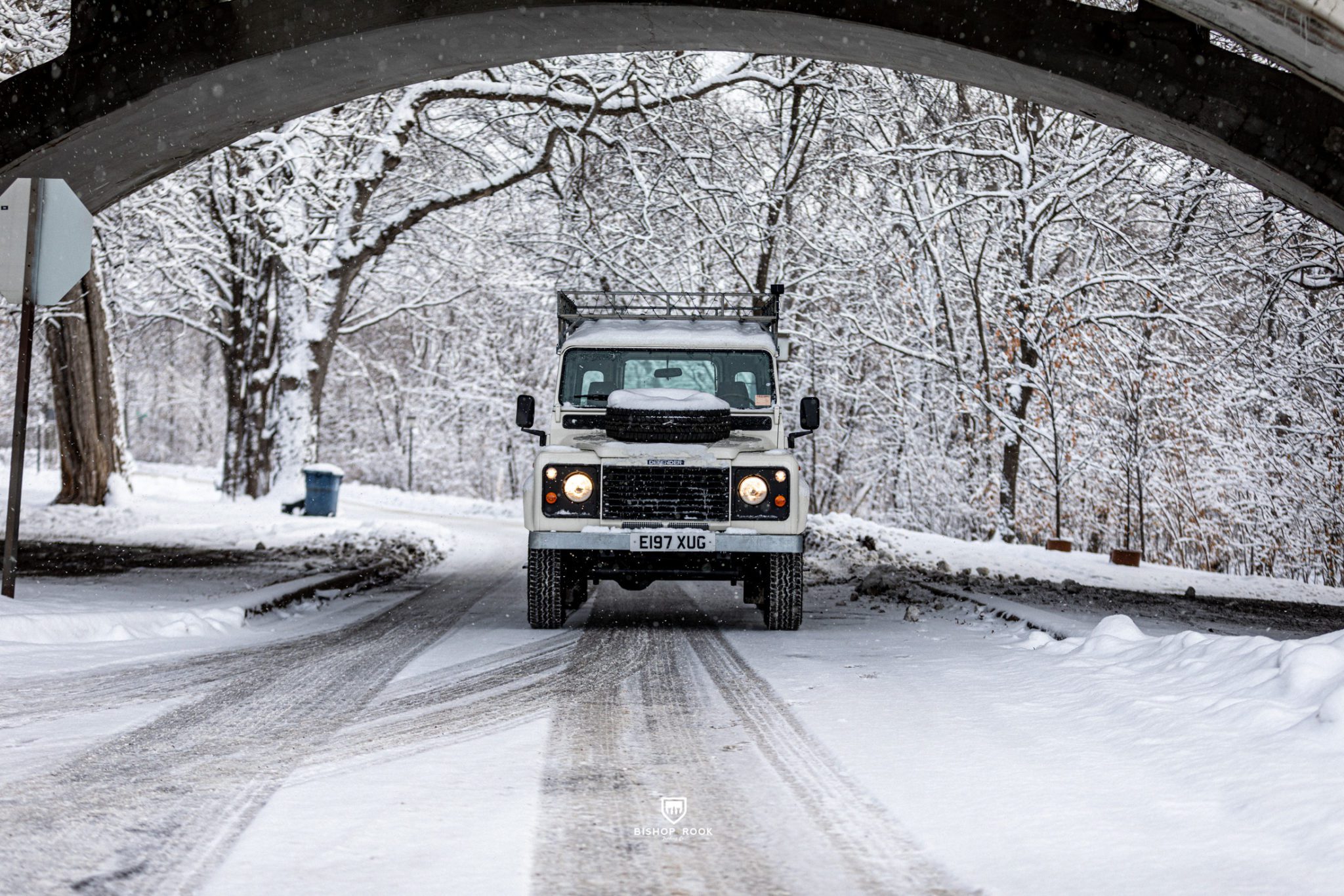Updated: July 2020
If you’re reading this you’re probably interested in importing a vintage Land Rover Defender or buying a vintage Land Rover Defender for use in California. This is a confusing topic, with many different thoughts and opinions on the matter. While we do not claim this as official legal council, we thought it would be helpful to share what we know about the subject of registering and certifying a Land Rover Defender in California.
California Environmental Standards and Defender Registration
Home to nearly 40 million residents, California is home to some of the most amazing beaches, mountains, trails, and other spots where a Land Rover Defender would be the perfect vehicle from which to enjoy them all. Unfortunately, California had historically been home to some of the worst air pollution in the country – leading to the most restrictive registration standards for owning and licensing vintage Land Rover Defenders. While most vintage Land Rover Defenders comply with federal Federal Safety and Emissions Regulations for importing and licensing, do not typically comply with California requirements for emissions.
The California Air Resources Board (CARB)
The California Air Resources Board (CARB) is responsible for vehicle Permits, Certifications, Verifications, and Registrations. CARB is responsible for evaluating the emission control systems of new vehicles and engines, and evaporative emission control systems of engine-equipped devices. Similarly, CARB is responsible for certifying older vehicles with upgraded emissions system, motor swaps, or other modifications.
The Clean Air Vehicle (CAV) decal program is administered by the Department of Motor Vehicles (DMV) in partnership with the California Air Resources Board (CARB). The program authorizes a vehicle that meets specified emissions standards to be issued a CAV decal. (source) Getting a Land Rover Defender compliant for California emissions regulations isn’t easy or cheap.
Without this CAV decal (it’s just a sticker, really), you could run the risk of having your Defender rejected from licensing or impounded.
“To be certified, a vehicle must demonstrate that its exhaust and (as applicable, depending on the specific vehicle category) evaporative emission control systems are durable and comply with the emission standards for the vehicle’s useful life (source).”
“ALL VEHICLES starting with Model Year 1976 have to meet California Emissions Standards to be sold in the state. Vehicles that only meet EPA (Federal, or “49 state”) standards can be brought into California 2 years after manufacture, with more than 7,500 miles on the odometer. There is no “sliding window” or “25 year exemption”. Since the engines used in Defenders (2.25, 2.5, Turbo, 200Tdi, 300Tdi) were never certified by California or the EPA, they are then ILLEGAL in California vehicles (source).”
As we work through the extensive list of options you might want to look into, here is the most up-to-date list online that we know of.
There are 6 major ways people bring Defenders in California:
From Defender Source
- Purchase a NAS or NAS-Possible (like Japan Spec) vehicles. This means 1993 D110s, or 1994/95/97 D90s. There are specific VIN numbers that are approved for US sale, and ALL of them have a sticker in the driver’s footwell that states the vehicle “Meets Federal Safety and Emissions Regulations” or something to that effect. Since they are EPA legal (in fact, most are California legal), you have no issue other than performing a smog check. 100% legal.
- Sweet talk your way through DMV. This is how most imported Defenders have arrived here. DMV assumes the stickers have worn away from an off-road vehicle that’s at least 25 years old. However there have been reports that the DMV is seeking out these vehicles and requiring owners to take them to a Smog Referee or CHP office for inspection, even if they have already been titled and plated. Not legal.
- Register it out of state, and drive it in California. This is another common tactic, since all of the states bordering California will readily register an imported Defender. However California requires you to register your vehicle within 20 days of bringing it into the state. Failure to do that can equal back fees, fines, and even jail time. The CHP has started a program called CHEATERS to find people with out of state plates, and that has netted the DMV almost $1.7M in 2013, and shows no sign of slowing. You are considered a resident of California if you file taxes here, have a California Driver’s License, pay the resident rate at a California University, register to vote, or “any other privilege or benefit not ordinarily extended to nonresidents.” So, not legal.
- Be a military member with out of state plates. If you are a CAC card holding member of the Military stationed in California, you can bring whatever plated out of state vehicle you have. 100% legal. However you can’t sell it to someone in the state and have them be exempt from all of the regulations.
- Purchase an import, and then implant an engine that is EPA or California compliant. This is the newest possibility. Especially with Nick’s LS conversion kit, and the possibility of transplanting a Ford Transit Puma motor into a Defender. California requires that an engine be the same model year or newer than the chassis it is being put in to. So if you have a 1987 Defender and want to put a 2010 LS Motor in it, along with ALL of the required emissions equipment, you can take it to a California Smog Referee and have it signed off as a legal engine swap. 100% legal.
- VIN Swap. Have a newer Defender, but title it as something older than a 1976. This is so illegal we aren’t even going to talk about it. Like felony pound me in the ass prison illegal. Don’t do it. We aren’t going to go down the rabbit hole of “what makes up a VIN” or “how much has to stay the same”. If you are asking these kinds of questions, you already know you are on the slippery slope.
So, in short, if you want a Defender that is in California Legally, you have these options:
- Buy a NAS
- Join the Military
- Engine swap with California approved components
You may luck out with the following, but it’s pretty much still not legal, and is no way condoned or sanctioned by anyone here:
- Sweet talk through the DMV
- Register out of state and drive it here
Don’t even think about this:
- VIN Swap











